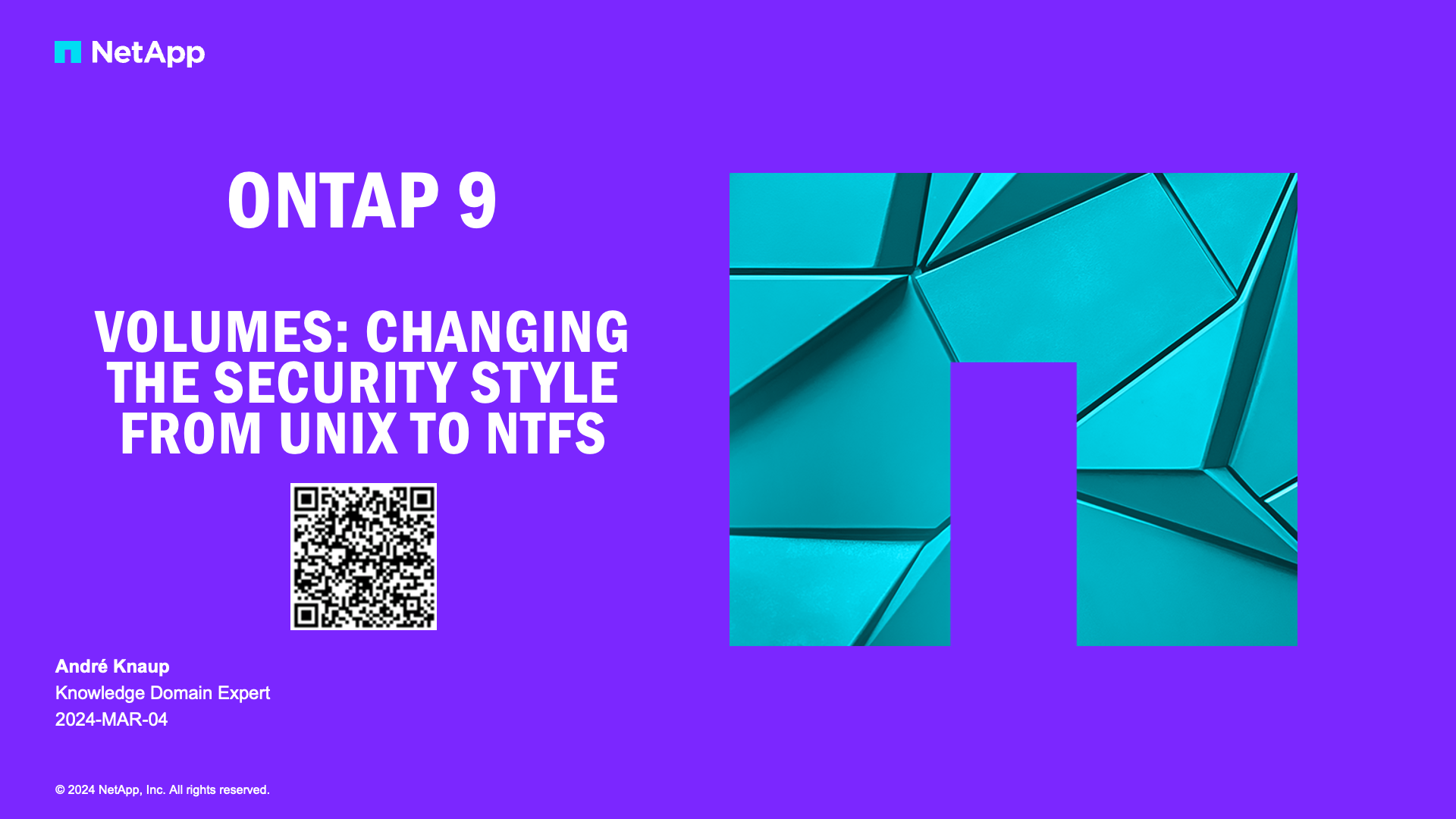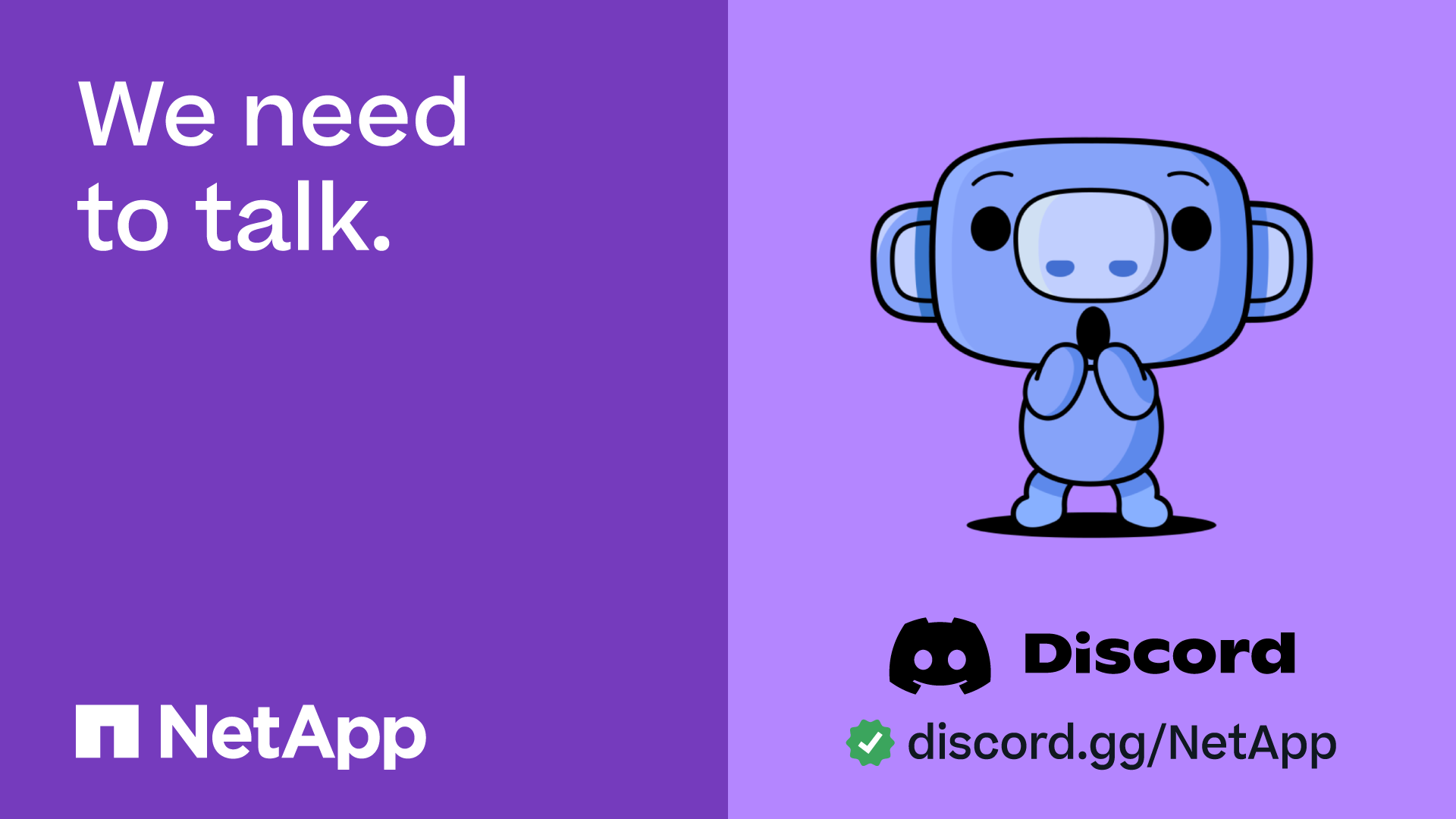Data Backup and Recovery
- Home
- :
- ONTAP, AFF, and FAS
- :
- Data Backup and Recovery
- :
- How to migrate LUNs to SnapDrive
Data Backup and Recovery
- Subscribe to RSS Feed
- Mark Topic as New
- Mark Topic as Read
- Float this Topic for Current User
- Bookmark
- Subscribe
- Mute
- Printer Friendly Page
- Mark as New
- Bookmark
- Subscribe
- Mute
- Subscribe to RSS Feed
- Permalink
- Report Inappropriate Content
Hi,
I am trying to migrate filer side created LUNs to SnapDrive.
Is this possible ?
I have tried unpresenting the LUNs from ESX and then connecting to them using SnapDrive, however a timeout issue occurs.
Are there utilities for doing this ?
Any help appreciated.
Thanks
Scott
- Mark as New
- Bookmark
- Subscribe
- Mute
- Subscribe to RSS Feed
- Permalink
- Report Inappropriate Content
Hi Scott,
What flavour of SD are we talking about - Windows, or UNIX?
I've been literally yesterday through the same journey with SDW, so this is what I've learned:
"If the LUN that is not getting connected is a new LUN created via FilerView, it is not connecting because there is no recognizable partition the LUN. Make sure you create a partition, format the disk and assign a drive letter on the Windows host. Then Unmap the LUN from the filer and connect the formatted LUN using SnapDrive![]()
."
[credits go to bhavik]
You can find some more detailed description in this doc:
http://now.netapp.com/NOW/knowledge/docs/snapdrive/relsnap61/pdfs/admin.pdf
regards,
Radek
- Mark as New
- Bookmark
- Subscribe
- Mute
- Subscribe to RSS Feed
- Permalink
- Report Inappropriate Content
Hi Radek,
Thanks for the reply.
Not sure what you mean by creating a partition, I can't create a partition in Windows as I cannot see it until SnapDrive can connect it. I also need to encure that the existing data is preserved.
This LUN was originally created in FilerView and mapped to ESX host(s).
I have unmapped it form ESX and would now like to connect to it via SnapDrive from a Windows host.
Is this possible ?
Thanks
Scott
- Mark as New
- Bookmark
- Subscribe
- Mute
- Subscribe to RSS Feed
- Permalink
- Report Inappropriate Content
You have to 'manually' attach a LUN to a Windows host, i.e. map LUN to an igroup including intiators form that host; once it is done rescan disks on the host side (via computer management GUI or diskpart CLI) & then intialize disk & create a partition on it - all from the Windows side.
Then unmap it (it will disapear from Windows) & connect it again using SDW.
Does it make sense?
Regards,
Radek
- Mark as New
- Bookmark
- Subscribe
- Mute
- Subscribe to RSS Feed
- Permalink
- Report Inappropriate Content
Yes, I understand.
Let me try again.
Thanks
Scott
- Mark as New
- Bookmark
- Subscribe
- Mute
- Subscribe to RSS Feed
- Permalink
- Report Inappropriate Content
When trying to connect to the LUN, the following error appears.
"A timeout of 60 secs elapsed while waiting for logical drive arrival notification from the operating system"
The actual drive appears in Windows but you cannot use it as it needs to formatted before use.
The OS is 2008 BTW.
Thanks
Scott
- Mark as New
- Bookmark
- Subscribe
- Mute
- Subscribe to RSS Feed
- Permalink
- Report Inappropriate Content
Scott,
I am confused now - were you hoping to attach these LUNs without loosing their content?
So first things first: when you said they were mapped to ESX, how did it actually look like? Were these LUNs formatted with VMFS to hold VMDK files? Or did you use LUNs for so called Raw Device Mappings where guest VMs format them with their native file system?
If the former is the case, then you definitely cannot attach VMFS file system to a Windows host - ain't gonna work
If the latter, then what was the actual flavour of guest OS: 2003, 2008? Basic or Dynamic disk? MBR or GPT partition?
Regards,
Radek
- Mark as New
- Bookmark
- Subscribe
- Mute
- Subscribe to RSS Feed
- Permalink
- Report Inappropriate Content
Radek,
These are the steps I have taken.
1. Originally had a VM on local storage of the ESX server. The VM had 3 x vmdk disks.
2. I created 3 seperate LUNs in NetApp and presented these to ESX so I could migrate the VM to Shared Storage and each VMDK to their respective NetApp LUN. So basically these LUNs are formatted with VMFS3 and house the vmdk and config files of the VM.
3. I then unmapped LUN 3 and have been trying to reconnect to this via SnapDrive whilst retaining the data.
I assume this cannot be done ?
Thanks
Scott
- Mark as New
- Bookmark
- Subscribe
- Mute
- Subscribe to RSS Feed
- Permalink
- Report Inappropriate Content
Nope - undoable.
The only way to preserve the data is to mount the LUNs back to an ESX host & then migrate OS images to Windows NTFS LUNs (different backup/restore and migration tools can do that)
Regrads,
Radek
- Mark as New
- Bookmark
- Subscribe
- Mute
- Subscribe to RSS Feed
- Permalink
- Report Inappropriate Content
Emmmm,
That's exactly what I was trying to avoid, 'backup & restore'
Are there any NetApp tools that can assist me with this as we are licensed for various tools.
Can I use FlexClone or SnapManager to help me with this rather than backup & restore ?
Thanks
Scott


